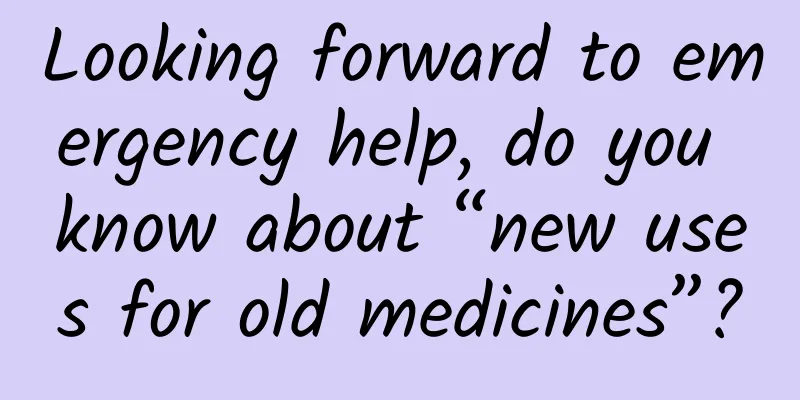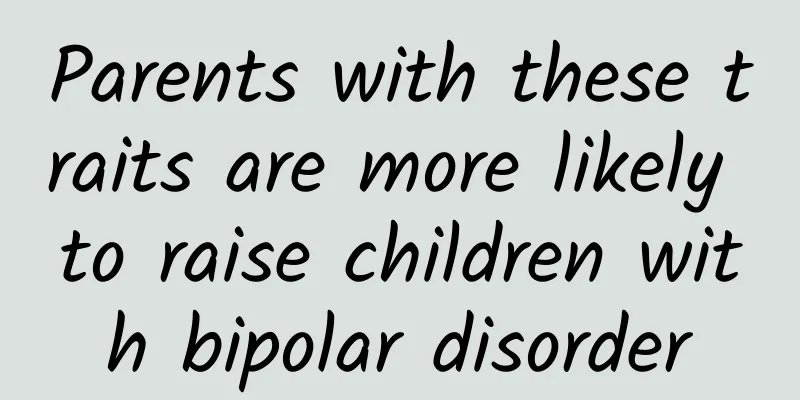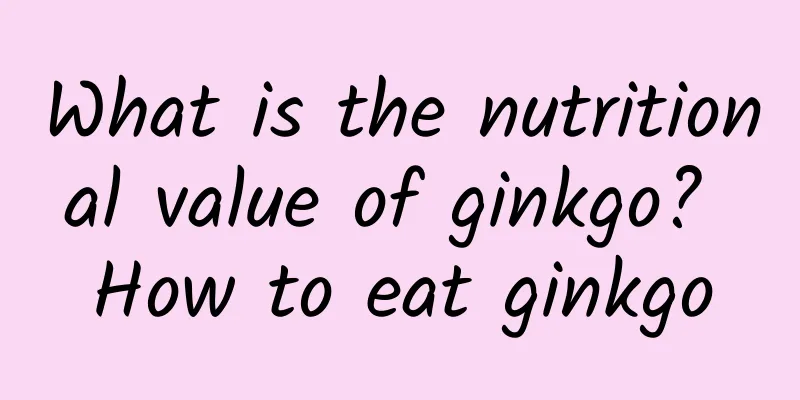Looking forward to emergency help, do you know about “new uses for old medicines”?

|
Author: Shanghai Institute of Materia Medica, Chinese Academy of Sciences The article comes from the Science Academy official account (ID: kexuedayuan) —— At the beginning of the new year of 2020, the novel coronavirus (SARS-CoV-2) pneumonia epidemic swept across the country. At this time, we have to face a harsh reality. Although scientists have completed the whole genome sequencing of the novel coronavirus and developed a rapid detection kit, there is currently no specific drug against the novel coronavirus, and it often takes about 10 years for a new drug to go from laboratory research and development to market. Therefore, many scientists have turned their attention to "new uses for old drugs." What exactly does "new uses for old drugs" mean, and is this strategy really useful? (Note: The drugs mentioned in this article specifically refer to small molecule chemical drugs) "Putting new wine in old bottles" to accelerate drug development There is a famous saying in drug discovery research that has been passed down to this day: "The best way to discover a new drug is to start with an old one", which means that the best way to discover a new drug starts with an old drug, in short, "old drugs in new uses". This was proposed by James Black, a Scottish pharmacologist who won the 1988 Nobel Prize in Physiology or Medicine. “Old drugs” refer to drugs that are already on the market or are undergoing clinical trials, and “new uses” refer to discovering new indications for them and using them to treat diseases [1]. Two famous drugs developed by James Black: the non-selective β-receptor antagonist propranolol (trade name “Inderal”) and the first histamine H2 receptor antagonist cimetidine, are also typical examples of “old drugs being used in new ways”. Propranolol was originally a classic drug for the treatment of coronary heart disease and hypertension, and has recently been found to be useful for the treatment of osteoporosis and melanoma [2]; cimetidine was originally a revolutionary drug for the treatment of peptic ulcers, and has recently been used to treat chronic obstructive pulmonary disease, HIV infection, etc. [3]. Figure 1: Two famous drugs discovered by James Black As we all know, the development cycle of new drugs is long, the investment is large, and the risk is high. It has always been a "slow and steady job" and "one wrong move can lead to a complete loss". For drug discovery for specific diseases, taking chemical small molecule drugs as an example, from obtaining active lead compounds in in vitro cell models to finally moving towards clinical application, it is necessary to survive a difficult process of "nine deaths and one life" such as multi-level activity and efficacy evaluation, targeting and mechanism of action exploration, toxicity and safety evaluation, metabolic performance evaluation, etc. However, old drugs that have survived many tests can at least quickly meet the basic conditions for drug safety evaluation and metabolism, and therefore are expected to accelerate the process of new drug discovery. Looking back on the development of "new uses of old drugs", accidental discoveries in clinical applications have led to many successful cases, and some old drugs have not only achieved "second success". This article uses aspirin and thalidomide as examples to introduce the direct "new uses" of "old drugs", and uses the "non-antibiotic effect" antibacterial development of the antifungal drug naftifine hydrochloride as an example to introduce the indirect "new uses" of "old drugs". Finally, we briefly discuss the candidate strategies for the "new uses of old drugs" against COVID-19. Aspirin's new mission More than 3,000 years ago, the oldest medical document in ancient Egypt, the Ebers Papyrus, recorded that the ancient Egyptians used willow bark for anti-inflammatory and analgesic purposes. The ancient Chinese also discovered the medicinal value of willow very early. According to the Shennong's Herbal Classic, the roots, bark, branches and leaves of willow can all be used as medicine, which has the effects of removing phlegm and improving eyesight, clearing away heat and detoxifying, diuresis and preventing wind, and can be used to treat toothache when applied externally. It was not until 1828 that the German pharmacist Joseph Buchner first purified the active ingredient salicin from willow bark, which was the prototype of aspirin. After years of exploration, in 1899, the invention patent application for acetylsalicylic acid was approved in the United States, and the German Bayer Pharmaceutical Factory began to officially produce this "magic medicine" with the trade name Aspirin. Aspirin has been used as an antipyretic and analgesic for more than a hundred years and is truly a century-old medicine. With the continuous deepening of clinical research, many new functions and effects of aspirin have been gradually discovered. What cannot be ignored is the role of aspirin in the prevention and treatment of cardiovascular diseases. The "Guidelines for the Prevention of Cardiovascular Diseases in China (2017)" lists aspirin as a basic drug for the primary and secondary prevention of cardiovascular diseases. Low-dose aspirin can acetylate platelet cyclooxygenase and inhibit platelet production of thromboxane A2, thereby playing an anti-platelet aggregation role and preventing thrombosis [4]. In recent years, the role of aspirin in cancer prevention and treatment has also been reported from time to time. For example, researchers at the Mayo Clinic in the United States found that people who took aspirin had a significantly reduced risk of bile duct cancer [5]. However, the anti-tumor mechanism of aspirin is still unclear and needs further study. Figure 2: Aspirin was accidentally discovered from willow bark The performance of aspirin in the “new use of old drugs” is encouraging. Studies have shown that aspirin can also prevent Alzheimer’s disease, lower blood sugar, treat cerebral thrombosis, dysmenorrhea, rheumatoid arthritis, and prevent and treat diabetic retinopathy. However, aspirin is not a universal “magic drug”. When treating different diseases, the dosage and course of treatment are significantly different. In addition, as the old saying goes, “one man’s meat is another man’s poison”, not all people are suitable for aspirin[6]. The resurrection of thalidomide The infamous chiral drug thalidomide, also known as "Thalidomide", is also a classic example of "old drugs being used in new ways". In the 1950s, thalidomide was launched as an analgesic and antiemetic in the absence of sufficient clinical safety evidence, mainly for the treatment of nausea and vomiting during pregnancy. However, in just a few years, the use of thalidomide caused tens of thousands of newborns with phocomelia malformation worldwide[7]. In 1960, studies found that thalidomide, as a chiral compound, has the activity of inhibiting pregnancy reactions in its R-configuration, while the S-configuration can cause miscarriage in pregnant women and even be teratogenic to newborns. Thalidomide was officially withdrawn from the market in 1963, and the "seal fetus incident" became a tragedy in the history of medicine. Figure 3: Children with phocomelia and thalidomide "When the road turns, a bridge over a stream suddenly appears." However, by chance, thalidomide was "resurrected." Erythema nodosum leprosum (ENL) is an acute inflammatory disease accompanied by intense and persistent pain. In 1964, the University Hospital of Marseille admitted a patient with erythema nodosum leprosum who suffered from persistent insomnia. The doctor gave the patient thalidomide in the hope of sedation. As a result, it was unexpectedly discovered that thalidomide can effectively alleviate the skin symptoms of patients with erythema nodosum leprosum. It was not until 1991 that researchers discovered that thalidomide can exert an anti-inflammatory effect by inhibiting tumor necrosis factor. In 1994, it was discovered that it can inhibit angiogenesis and thus has an anti-tumor effect. In 1998, thalidomide was approved by the FDA for the treatment of multiple myeloma, a malignant blood tumor. Today, thalidomide has returned to people's attention for its pharmacological effects in immunity, anti-inflammation, anti-angiogenesis, etc. From the infamous "thalidomide" to a new anti-cancer drug, thalidomide has become a microcosm of the history of human drug research and development. The nemesis of "super bacteria" may be the descendant of "old drugs" With the development of high-throughput drug screening and omics technologies, "new uses for old drugs" have gradually gotten rid of the dilemma of "accidental" discoveries and are moving towards the highway of "targeted" discoveries. For each drug target (biological macromolecules, biological pathways, disease phenotypes, etc. that have pharmacodynamic functions in the body and can be acted upon by drugs), the process of finding a satisfactory active small chemical molecule is like facing an exquisite lock and needing to find an equally exquisite key that fits it closely. New targets often lack such active small chemical molecules, and screening of old drug libraries based on new targets or phenotypes can help speed up the discovery of such "keys" and achieve intervention and biological function research on new targets. In addition, optimization based on old drugs as the skeleton can greatly shorten the preclinical research cycle of lead compound discovery, lead compound optimization, and even candidate drugs. At the same time, based on clear pharmacokinetic properties and safety parameters, it can effectively reduce the risk of clinical research failure. The long-term clinical use and even abuse of antibiotics has led to the continuous aggravation of bacterial resistance worldwide. The emergence of "super bacteria" has sounded the alarm for mankind. Some studies have predicted that if there is no effective strategy to fight "super bacteria" infection, it is expected that 15 million people will die from it by 2050. What is more worrying is that the development and application of new antibiotics are sluggish, and mankind is about to face the risk of entering the "post-antibiotic era", that is, the era when all existing antibiotics are ineffective. However, there is hope that "super bacteria" will be defeated by the descendants of "old drugs". Staphylococcus aureus can cause fatal infections. The golden pigment it secretes is called the "armor" of Staphylococcus aureus and is an important factor in determining its ability to infect and cause disease. The Chinese Academy of Sciences and scientists from universities have collaborated to conduct phenotypic screening of a chemical small molecule library consisting of thousands of old drug molecules. They found that the old antifungal drug "naphthifine hydrochloride" has the ability to competitively inhibit the function of dehydrosqualene desaturase (CrtN), inhibit the synthesis of the golden "armor", and thus effectively inhibit the infection and pathogenicity of clinically isolated methicillin-resistant Staphylococcus aureus (MRSA) (such as Mu50 and USA300/USA400 "super bacteria") in experimental mice [8]. This antibacterial strategy of "reducing the ability of pathogenic bacteria to infect" is completely different from the classic antibiotic method of "killing bacteria". It can protect human microorganisms to the greatest extent and may also solve the problem of broad-spectrum drug resistance caused by sterilization. On this basis, multiple rounds of synthetic optimization were carried out based on the chemical structure of naftifine, and a better candidate drug molecule for anti-Staphylococcus aureus infection was successfully obtained. In-depth preclinical research is currently being carried out. Figure 4: The old drug naftifine hydrochloride has a new mechanism of action for antibacterial infection that is different from classical antibiotics Where are the drugs to fight the new coronavirus? In this new coronavirus pneumonia epidemic, "old drugs in new uses" have also played an important role. (1) No specific drug? The fastest strategy is to find a treatment drug from existing antiviral drugs SARS-CoV-2, which caused the current outbreak, is the seventh coronavirus that can infect humans. Two of the coronaviruses that have caused major outbreaks are SARS and MERS. SARS-CoV-2 and these are both β-coronaviruses, and there is currently no confirmed effective anti-SARS-CoV-2 virus treatment [9]. The pathogenic process of coronaviruses includes: adsorption - cell entry - uncoating - gene expression - nucleic acid replication - assembly - release, which is very similar to the pathogenic process of most viruses, as shown in Figure 5. Drugs that can block or inhibit the virus in the above pathogenic links may be effective against the new coronavirus. Figure 5: Pathogenic process of coronavirus[10] The antiviral drugs currently on the market include: representative drugs that prevent viruses from adsorbing on the cell surface, such as immunoglobulin and polysaccharides; representative drugs that prevent viruses from penetrating, such as adamantane; representative drugs that inhibit viral nucleic acid replication, such as acyclovir; representative drugs that inhibit viral protein maturation, such as lopinavir/ritonavir; representative drugs that inhibit viral release, such as oseltamivir (Tamiflu); and representative immunomodulators, such as interferon. For drug development against SARS and MERS, which are both coronaviruses, the fastest candidate drugs are currently in clinical phase II/III. For example, the study of lopinavir/ritonavir against MERS, and the study of remdesivir against Ebola virus, but the anti-SARS and MERS have only shown good efficacy in animals. Lopinavir/ritonavir is a protease inhibitor of HIV virus, approved for marketing in the United States in 2000 for the treatment of AIDS. The protease of coronavirus has certain similarities with the protease of HIV virus, and the protease inhibitor of HIV virus may also be effective against coronavirus. Remdesivir is an RNA polymerase (RdRp) inhibitor used to block viral RNA replication, and may also act on the RdRp of the new coronavirus. At present, the fifth edition of the diagnosis and treatment plan recommends the trial use of antiviral drugs such as α-interferon nebulizer inhalation, lopinavir/ritonavir, and ribavirin. In the emergency situation of the epidemic, Wuhan Jinyintan Hospital launched a randomized, open, blank-controlled interventional clinical study on the efficacy and safety of lopinavir/ritonavir and interferon-α2b combined treatment of hospitalized patients infected with the new coronavirus in Wuhan. The Center for Drug Evaluation (CDE) of the China National Medical Products Administration quickly accepted and approved the clinical trial of remdesivir for the treatment of new coronary pneumonia. Image source: China-Japan Friendship Hospital official website (2) Targeting specific drug targets, screening candidate new drugs from known old drugs to achieve “finding a needle in a haystack” Research on new viruses determines the speed of new drug development, and research results are updated every day. Scientists have successfully isolated SARS-CoV-2 virus particles, proving that SARS-CoV-2 is the pathogen of the new pneumonia, obtained its complete genome sequence information, and resolved the high-resolution crystal structure of SARS-CoV-2 virus 3CL hydrolase (Mpro) (Protein Data Bank (PDB) code is 6LU7), providing structural information of candidate targets for vaccine development and drug development. By comparing the genome sequence information of various similar viruses to find the same or similar points, and then using virtual screening, enzyme screening, and cell screening methods to find known old drugs that act on these targets, we can quickly find potentially effective new drug candidates against the new coronavirus, greatly shortening the speed of new drug development. There have been many reports on the Internet about the research progress of "new uses of old drugs" for SARS-CoV-2. The relevant hot potential targets include: RNA polymerase (RdRp), S protein (spike protein), ACE2, 3CL hydrolase (3CLpro), papain-like protease (PLpro), etc. [11]. According to relevant reports, 30 small molecules that may have therapeutic effects on SARS-CoV-2 were found from known old drugs, active natural products and traditional Chinese medicines through computer virtual screening and in vitro enzyme inhibition activity screening evaluation for the key enzyme Mpro that controls the activity of the coronavirus replication complex [12]. A number of marketed drugs with antiviral activity have been found in chloroquine phosphate, favipiravir and traditional Chinese medicines [13]. Academician Li Lanjuan's team found that arbidol and darunavir can effectively inhibit coronavirus [14]. However, these candidate active molecules and ingredients need further scientific demonstration and clinical research. (3) Challenges in the development of SARS-CoV-2 therapeutic drugs At present, the antiviral drugs used in clinical practice are, in a sense, only virus inhibitors and cannot completely eliminate viruses. The role of antiviral drugs is to inhibit the reproduction of viruses, provide time for the host immune system to function, resist viral invasion, repair damaged tissues, and thus alleviate the condition. There is still a lack of highly specific drugs for the treatment of viral diseases. What exactly is the difficulty in development? First, viruses must rely on host cells to reproduce, and eliminating viruses also brings side effects to the human body. Secondly, the high replication error rate, short replication time, and rich homologous and non-homologous recombination of the positive-strand RNA virus genome lead to a high mutation rate of the virus, which is prone to drug resistance. The development of broad-spectrum anti-RNA virus drugs is imminent. Furthermore, SARS came suddenly and left suddenly, so many research and development work was stranded. The research and development of such strategic drugs must be persistent, and scientists must seize the time to study when the epidemic comes. Finally, while "old drugs are used in new ways", biological macromolecule drugs, vaccines and antibodies are being stepped up. For susceptible people infected with the virus, vaccination is the best method; therapeutic macromolecule biological drugs are more specific, and therapeutic antibody drugs need to be developed as soon as possible. The war between humans and viruses will continue, and new viruses will surely appear in the future, but there is no need to panic or be afraid. Diseases such as measles, smallpox, and influenza have all caused serious consequences, but with the accumulation of human scientific knowledge and experience in fighting diseases, these diseases have been effectively controlled. Looking into the future from the past, "new uses of old drugs" will surely provide the strongest support for the tug-of-war between humans and viruses and other diseases. References: [1] Nosengo N. Can you teach old drugs new tricks? Nature. 2016; 534:314–316 [2] Cavalla D, Singal C. Retrospective clinical analysis for drug rescue: for new indications or stratified patient groups. Drug Discov Today. 2012; 17:104–109. [3]https://clinicaltrials.gov/ct2/results?cond=cimetidine&term=&cntry=&state=&city=&dist= [4] Chinese Guidelines for the Prevention of Cardiovascular Disease (2017) [5] Database of OTC Drug Selection and Conversion Catalog, State Food and Drug Administration [6] Choi J, Ghoz HM, Peeraphatdit T, Baichoo E, Addissie BD, Harmsen WS, et al. Aspirin use and the risk of cholangiocarcinoma[J]. Hepatology, 2016, 64(3):785–96. [7] Zhu Lan. The story of thalidomide[J]. China Food and Drug Administration, 2019(09):110-113. [8] Chen F, Di H, Wang Y, et al. Small-molecule targeting of a diapophytoene desaturase inhibits S. aureus virulence. Nat Chem Biol, 2016, 12(3): 174-179. [9] Diagnosis and Treatment Plan for Pneumonia Caused by Novel Coronavirus Infection (Trial Fifth Edition) [10] De Wit E, Van Doremalen N, Falzarano D, et al. SARS and MERS: recent insights into emerging coronaviruses [J]. Nature reviews Microbiology, 2016, 14(8): 523-34. https://doi.org/10.1038/nrmicro.2016.81. [11] Global R&D pipeline of anti-coronavirus drugs, Pharmaceutical Times, February 6, 2020 [12] A joint research team from the Shanghai Institute of Materia Medica, Chinese Academy of Sciences and ShanghaiTech University has discovered a group of old and traditional Chinese medicines that may have therapeutic effects on the new coronavirus http://www.simm.ac.cn/xwzx/kydt/202001/t20200125_5494417.html. [13] Chloroquine phosphate, favipiravir and antiviral ingredients found in traditional Chinese medicines, Beijing Daily Client, February 4, 2020 [14] Li Lanjuan’s team: Abidol and darunavir can effectively inhibit coronavirus, China News Network, https://www.chinanews.com/gn/2020/02-04/9078596.shtml |
>>: What was Go called in ancient times? How to play Go?
Recommend
Of the skin all over our body, why is the face the most prone to problems?
Have you noticed that in our body, facial skin se...
The effects and applicable population of Buzhong Yiqi Pills
Buzhong Yiqi Pills are a Chinese patent medicine ...
Teach you how to promote breast development
Breast development is an issue that many female f...
At what age do girls' breasts develop?
I believe we all know that for women, breasts are...
What are the functions and benefits of a humidifier? Does a humidifier emit radiation?
The humidifiers on the market are mainly divided ...
Is it painful to clean the uterus?
I believe many people know the principle of abort...
How to better regulate dysmenorrhea and scanty menstruation?
Every woman will encounter the same difficult pro...
Precautions for conception on ovulation day
We all know that it is very difficult for every p...
Health Science: Talking about Health Preservation during Solar Terms - Minor Cold
Health Science: Talking about Health Preservation...
What foods can help enlarge breasts?
Girls' breast development is something they s...
Ovarian cyst puncture details
In our lives, most patients with ovarian cysts us...
Viscous fluid discharged after 5 days of medical abortion
Medical abortion is a very common method of termi...
Hypertension alert! 6 blood pressure-raising foods are blacklisted. Avoid them even if you crave them to prevent the risk of cerebral hemorrhage!
In this fast-paced era, high blood pressure seems...









